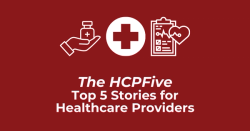
OR WAIT null SECS
Psychologically Distressed Patients Faced Challenges During COVID-19
According to a new study, overall outpatient mental health care increased from 11.2% to 12.4% between 2018 and 2018. However, for individuals with serious psychological distress, the rate of care decreased from 46.5% to 40.4%.
A study found although the rate of outpatient mental health care increased during the COVID-19 pandemic, the rate decreased for individuals with serious psychological distress—particularly impacting older adults, as well as individuals who are unemployed, lower-income, less educated, and have a rural residence.1
“These trends underscore a public health need to broaden outpatient mental health care access to more distressed, older, and unemployed adults,” investigators, led by Mark Olfson, MD, MPH, from New York State Psychiatric Institute, College of Physicians and Surgeons of Columbia University, wrote.
Research found even though mental health problems increased during COVID-19, people do not seek the help they need. The number of US adults with mental health problems who did not have a mental health care visit increased from 9.2% in August 2020 to 11.7% in January 2021. The finding suggests a gap in the access to outpatient mental health care.
Olfson and colleague’s study aimed to characterize trends in psychological distress and outpatient mental health care among US adults from 2018 – 2021, as well as assess patterns of outpatient mental health care format, such as in-person, telephone, and video. The cross-sectional national survey was administered in English and Spanish through computer-assisted personal interviews and included 86,658 adults aged ≥ 18 years from the Medical Expenditure Panel Survey Household Component with surveys in 2018 (n = 22,227), 2019 (21,305), 2020 (21,138), and 2021 (21,988. A sample of households was interviewed 5 times over 2 years.
The team broke respondents into age groups: young adults (aged 18 – 44 years), middle age 45 – 64 years), and older adults (≥ 65 years). Other characteristics examined included sex, race and ethnicity, level of education, marital status, annual family income in multiples of the federal poverty level, employment status, health insurance, and urban or rural residence.
To strengthen some analyses, investigators pooled the years 2018 – 2019 and 2020 – 2021. They measured psychological distress with the Kessler-6 scale, and respondents were asked how often in the past 30 days they felt so sad that nothing could brighten their mood, nervous, restless, fidgety, hopeless, that everything was an effort, or worthless. A score ≥ 13 indicated serious psychological distress, a score of 1 – 12 indicated less serious distress, and 0 indicated no distress.
The study found the rate of serious psychological distress among adults increased from 3.5% to 4.2% between 2018 and 2021. Despite the rate of outpatient mental health care increasing from 11.2% to 12.4%, the rate decreased from 46.5% to 40.4% for individuals with serious psychological distress.
After controlling for age, sex, and distress, the team observed a significant increase in outpatient mental health care for young adults but not middle-aged and older adults. There was also an increase in outpatient mental health care for employed adults but not unemployed adults.
Additionally, the team observed an increase in the number of adults who reported less serious psychological distress (adjusted difference, 2.5 percentage points; 95% confidence interval [CI], 0.8 to 4.2) and a reduction in adults reporting no psychological distress (-3.2; 95% CI, -5.0 to -1.5). They found a greater increase in serious psychological distress in men (0.9; 95% CI, 0.1 to 1.7) and less psychological distress in women (3.5; 95% CI, 1.4 to 5.5).
Between 2018 – 2019 and 2020 – 2021, psychotropic medication decreased among adults with serious psychological distress (- 5.1; 95% CI, - 9.9 to -0.4). However, levels of psychotropic medication usage did not change among adults with less serious or no stress (0.2; 95% CI, -0.5 to 1.0). Using anxiolytics, sedatives, and mood stabilizers significantly reduced among adults with serious psychological distress.
The investigators found 33.4% of mental health outpatients received ≥ 1 video visit. Telephone appointments were more common for adults who were unemployed, publicly insured, and had an urban residence. In contrast, in-person care was more common for younger adults, women, non-Hispanic Whites, the lowest income group, nonelderly unemployed, and publicly insured.
A limitation the investigators highlighted was limited information on the format of outpatient mental health service care (in-person, video, and telephone) since data only started to become available in the 2021 survey.
Investigators concluded by stating primary care physicians will continue to face challenges in connecting their older, unemployed, low-income, uninsured, and more psychologically distressed patients to video-based outpatient mental health care unless progress is made in breaking the barriers. However, a recent study found telehealth is unlikely to close systemic inequalities in access to care.2
“To reduce these disparities, it will be important to identify and address specific barriers that impede older adults and people with lower socioeconomic status from accessing virtual mental health care,” investigators wrote.1 “Although an estimated 85% of U.S. adults own a smartphone, simply owning a video-enabled device does not guarantee that the person will have the necessary skills to operate the video applications required to connect to video visits.”
References
- Olfson M, McClellan C, Zuvekas SH, Wall M, Blanco C. Trends in Psychological Distress and Outpatient Mental Health Care of Adults During the COVID-19 Era. Ann Intern Med. Published online February 6, 2024. doi:10.7326/M23-2824
- Derman, C. Despite Increase in Use, Telehealth Not Enough to Address Gaps in Access to Care. HCPLive. January 5, 2024. https://www.hcplive.com/view/telehealth-not-enough-to-address-gaps-in-access-to-care. Accessed February 7, 2024


